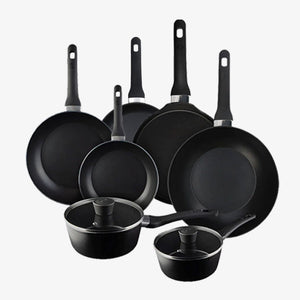Why Choose Induction Cooking?
Induction cooking is becoming a favourite among both professional chefs and home cooks for several reasons:
- Efficiency: Induction cooktops heat pans directly, reducing cooking times significantly. This is because they convert up to 90% of the energy they use into heat, compared to 70-75% for gas and 60-65% for electric stoves.
- Precision: Induction allows for precise temperature control, essential for delicate temperature-sensitive tasks such as melting chocolate or simmering sauces with dairy or acidic elements like a beurre monté.
- Safety: Induction cooktops remain cool to the touch, reducing the risk of burns which can be great for young ones developing an interest in cooking. Additionally, they automatically shut off when a pan is removed.
- Cleanliness: Spills don't burn onto a cool cooktop, making it much easier to clean if you don’t have a splatter guard in your artillery.
- Eco-Friendly: Higher energy efficiency means lower energy consumption, reduced running costs and reduced carbon footprint - tick, tick, tick!
The Science Behind Induction Cooking
Induction cooking works when the pan is placed on the cooktop, an alternating electric current passes through a coil beneath the cooktop, creating a magnetic field, which induces electric currents (eddy currents) in the pan, generating heat directly in the metal. If that has gone over your head, perhaps the following breakdown will help to clarify things a little:
- Direct Heating: Heat is generated directly in the cookware, not through a flame or electric element.
- Instant Heat Adjustment: Changes in heat settings are instantaneous, unlike gas or electric stoves which take time to heat up or cool down.




